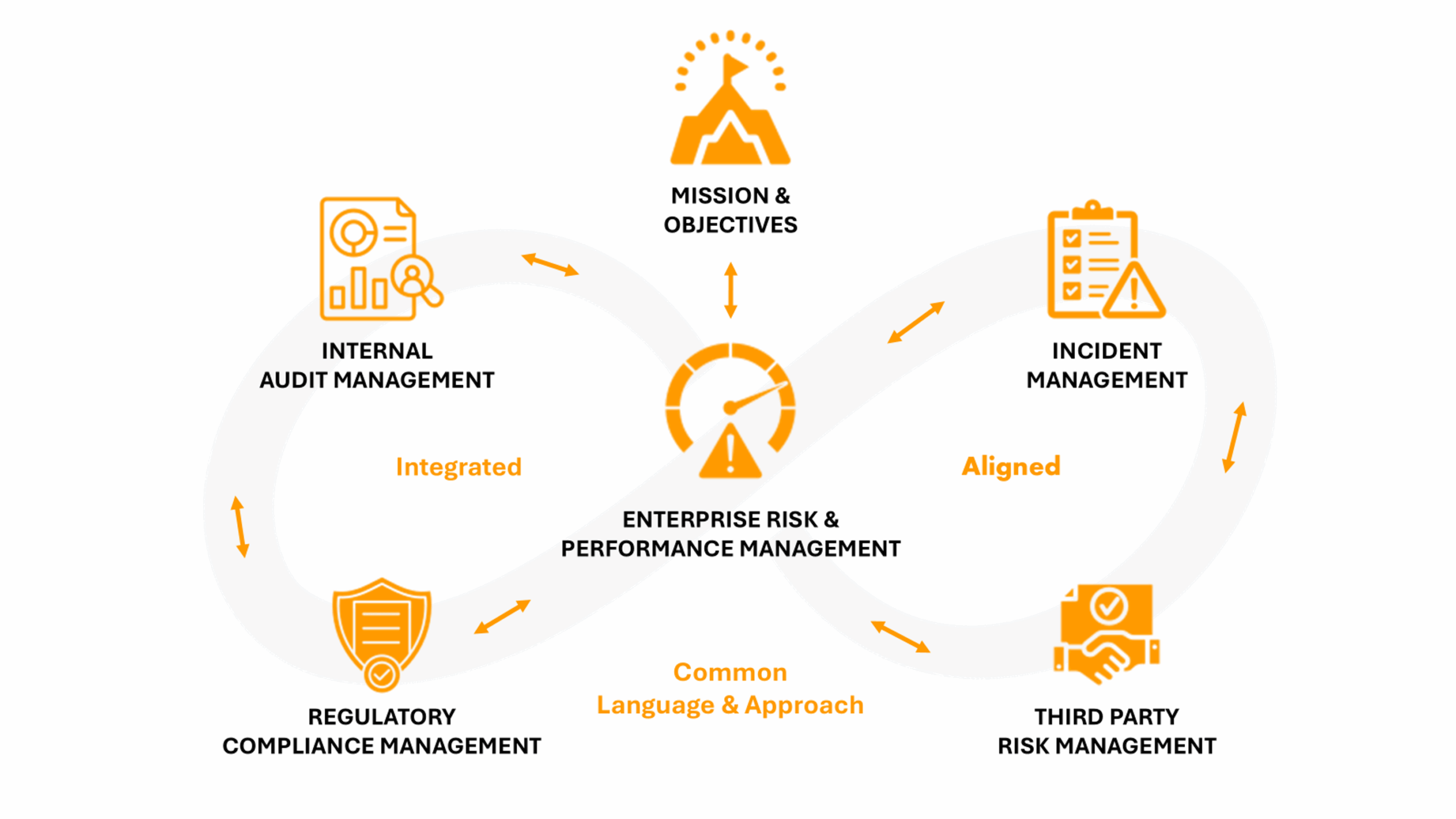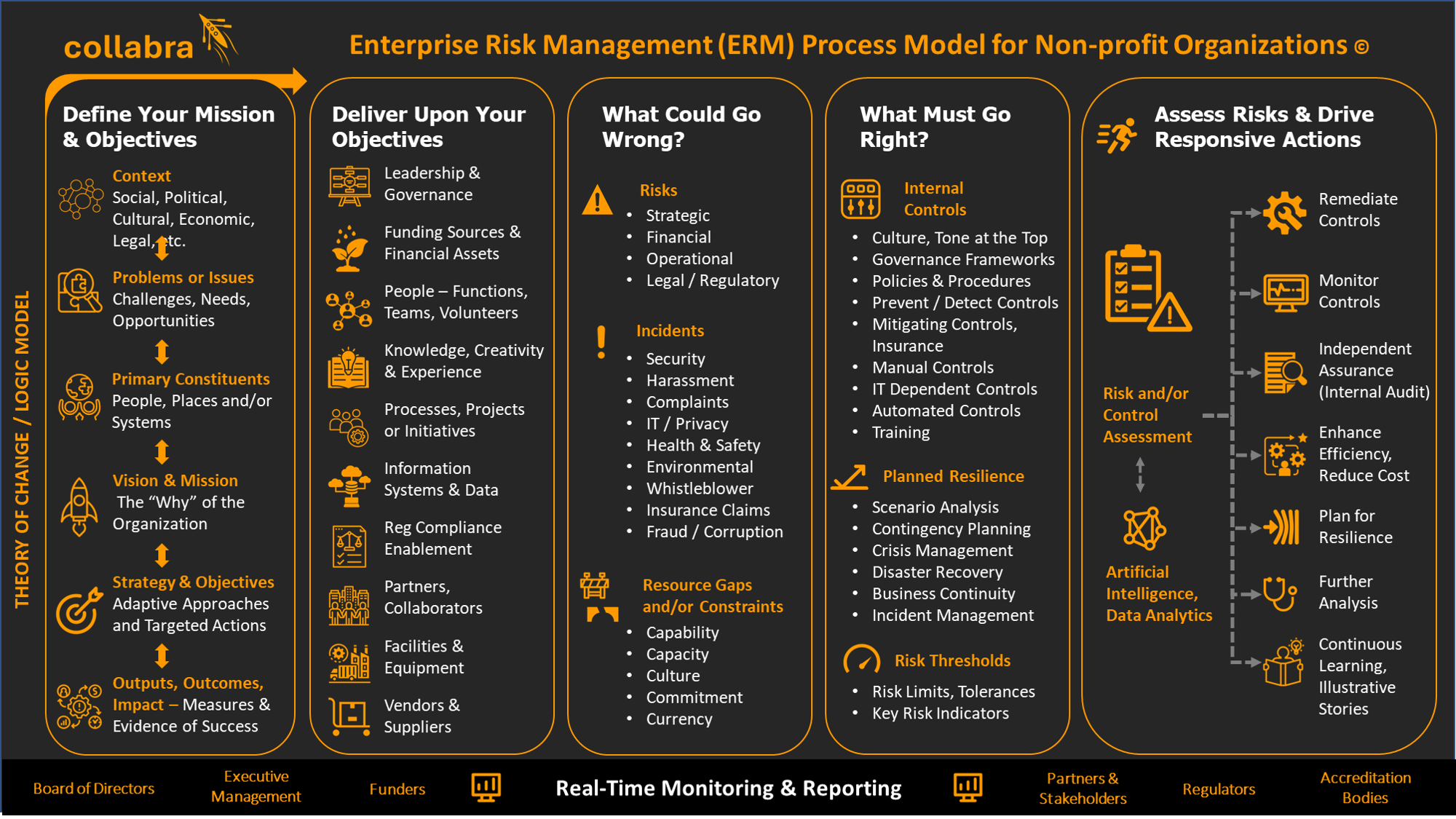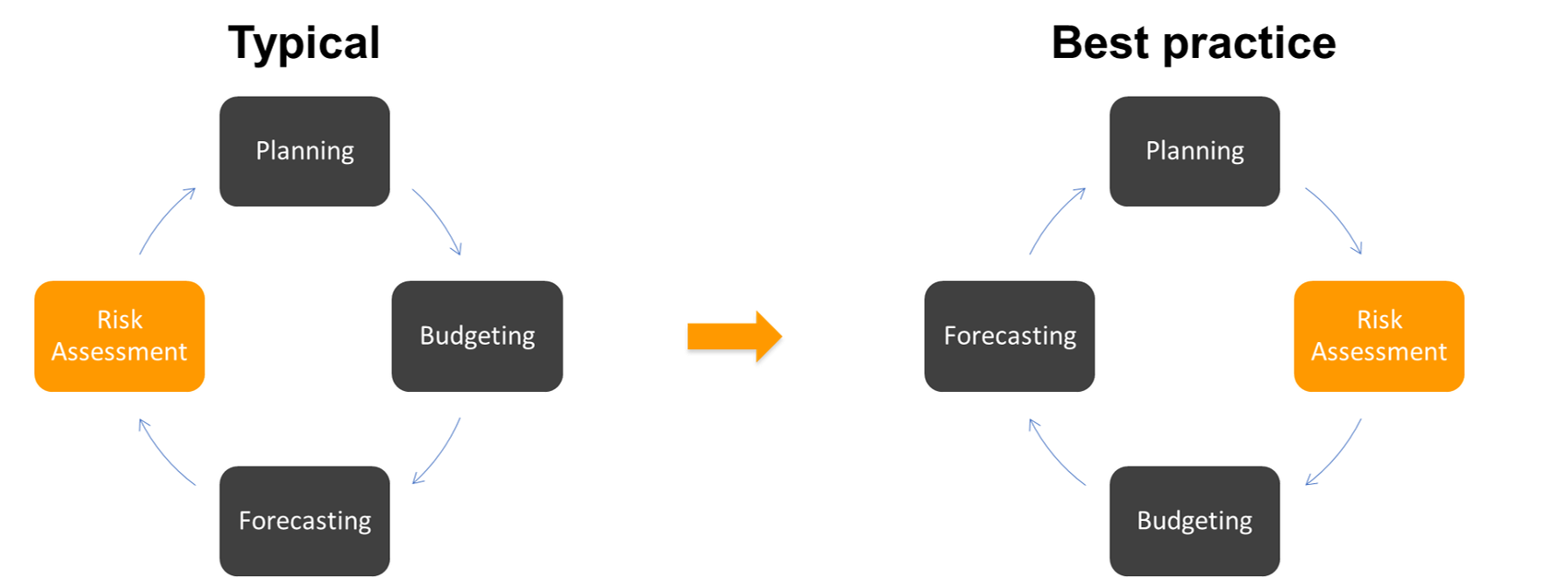Mission-focused ERM
With Collabra, you’ll readily identify and manage the risks that matter most, e.g. those that are truly material to the achievement of your organization’s mission & objectives. And through seamless integration across related applications and processes, you’ll dramatically enhance both efficiency and insight.

Achieved through a shared understanding
Before deploying technology to support your enterprise risk management program, it’s important that everyone is literally and figuratively on the same page. In particular, understanding how ERM links to strategy and how it helps inform decisions regarding where to focus and which actions to take.
In support, we’ve create simple yet comprehensive frameworks to help teams understand and frame how all the pieces fit together. And with that common frame of understanding and language, your team can then define where the organization is today, create a vision for the future, and a establish roadmap for getting there.

Click to Enlarge
NONPROFIT RISK MANAGEMENT FRAMEWORK
For nonprofits, effective enterprise risk management isn’t about avoiding risk — it’s about understanding it in the context of mission. By identifying what could stand in the way of impact and planning accordingly, organizations can protect what matters most.

Click to Enlarge
COOPERATIVE RISK MANAGEMENT FRAMEWORK
For cooperatives, managing risk means protecting members and ensuring long-term sustainability. A structured, transparent approach to enterprise risk management helps align oversight with cooperative values — strengthening trust, performance, and shared success.
Context-informed risk assessment
Risk management is everyone’s job, not just a select few. As such, begin by distributing ownership and accountability for risks to those individuals that have the requisite experience and expertise to accurately assess the risks that they directly manage and own.
Then, empower those risk owners to more effectively assess and manage their risks by providing real-time visibility into related strategic objectives, controls, indicators, incidents, responsive actions and internal audit activities. A full assessment history is also just a click away.
Satisfy Your Appetite for Managing Risk Exposure
Collabra provides simple yet powerful mechanisms and reporting that enable management and the Board to see where exposures are below, at, or above tolerance, and which way things are trending. This helps address key questions – Where do we need to bring risks back into tolerance? Where can / should we perhaps take on more risk?
And for those organizations struggling to articulate an overall risk appetite, we suggest focusing upon establishing and monitoring specific risk tolerances, targets and limits – first. That activity and insight, focused upon quantitiative measures, can then help inform articulation of the organization’s overall appetite for risk from a strategic and mission-aligned persepective.
Key Risk Indicators
One of the most powerful ways of ensuring a comprehensive and well-supported risk assessment program is by leveraging and analyzing quantitative data – in this case, key risk indicators. Most importantly, indicator data can help inform and or confirm your assessment of risk exposure, control effectiveness, or both.
Easily configure your organization’s indicators:- Assign an Indicator Owner – Ideally, the person with the most ready access to the data.
- Select Indicator Type – At or Above, At or Below, Range or Self-defined
- Establish Threshold Levels – A traffic light approach is most common (Red, Yellow, Green). Need more breadth? Orange is available, too.
- Assign Frequency of Update – Monthly, Quarterly, Annually, etc.
- Define Unit of Measure – Percentage, Currency, Number, etc.
Policy Management
Policies are key controls that define how certain risks shall be managed within your organization. And with Collabra, you’ll rest assured that your organization’s policies are available, reviewed and up-to-date within your Collabra Policy Library. Simply specify key aspects such as:
- Policy Owner
- Policy Reviewer
- Frequency of Review
- Next Review Date
- Board Approval Required?

Your process should drive your technology –
not the other way around.
Right from the start, our teams work closely with yours to ensure that your ERM process, approach and nomenclature drive our technology – not the other way around. This helps ensure quick and efficient end user understanding and adoption by presenting familar processes and language – right from their first login.
We’ll also work with your team to identify and migrate your existing data, enabling your organization to start enhancing efficiency and generating value from Day 1. And best of all – the end to end implementation process, from discovery to go-live, is typically just 8 weeks.

And remember – timing is everything
Understandably, annual risk assessments are often performed off-cycle (after year-end close, when management and the Board have a bit more breathing space). Unfortunately, during these off-cycle risk assessments, risk owners may be reticent to reveal control issues if they don’t have the required budget to address them.
As such, the best time to perform your risk assessment is just before, or within, your planning and budgeting cycle. This can help ensure that sufficient funds are made available to address key risks and related control improvement opportunities, identified within your risk assessment.




